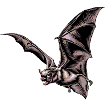Museum, University of Nebraska State

University of Nebraska State Museum: Mammalogy Papers
Document Type
Article
Date of this Version
3-25-2009
Abstract
Located off the northeastern coast of Venezuela, Trinidad is a small tropical island with a rich diversity of bats. Although 66 species have been documented, few inventories have pub¬lished information on community structure of bats in the diverse habitats of the island. Here we report on composition, abundance, and natural history of species captured primarily in the Northern Range at the end of the rainy season (late December–early January). We captured 789 individuals representing 30 species in six families, including 672 bats in nets at ground level and 117 associated with roosts. Our capture rates in ground-level mist nets were substantially higher than other surveys reported from Trinidad. In ground-level nets, Carollia perspicillata, Artibeus jamaicensis, Uroderma bilobatum, Platyrrhinus helleri, and A. glaucus composed 79.8% of captures, and those species were present at most sites. Bats in the family Phyllos¬tomidae accounted for 91% of captures and 59% of species. By feeding guild, captures were comprised of frugivores (86%), aerial insectivores (7%), nectarivores (3%), omnivores (3%), and gleaning animalivores (2%). We observed reproductive activity in only seven species, but this represents new seasonal information for Trinidad. Our study reports on the natural history of Trinidad’s unique and diverse chiropteran fauna during a time of year when little information is available.


Comments
Occasional Papers, Museum of Texas Tech University, Number 285, 25 March 2009.